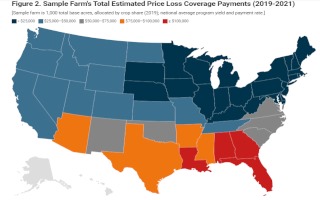By Francis L. Fluharty
As the movement to regional food production increases, smaller-scale beef processing plants are opening. The result is that many people who have not had a long history of finishing cattle on high-grain diets are starting to feed cattle. The diets used in growing yards are more forage based, whereas finishing diets have more grains and grain by-products. So, why do we need to feed diets that have a greater percentage of grain in order to get more average daily gain (ADG), be more efficient, and get better marbling?

Well, the major volatile fatty acids (VFA) produced by rumen microorganisms are acetic acid (CH3COOH), propionic acid (CH3,CH2COOH) and butyric acid (CH3,CH2,CH2COOH). These VFA are the main products of the digestion of feed by bacteria in the rumen, and serve as the main precursors for both glucose and fat in ruminants. On a forage-based diet, the proportion of VFA would be approximately 65-70% acetic, 15-25% propionic, and 5-10% butyric. Feeding grain-based diets high in readily fermentable carbohydrate (starch) increases the proportion of propionic acid produced through ruminal fermentation, and results in . . .
Source : osu.edu